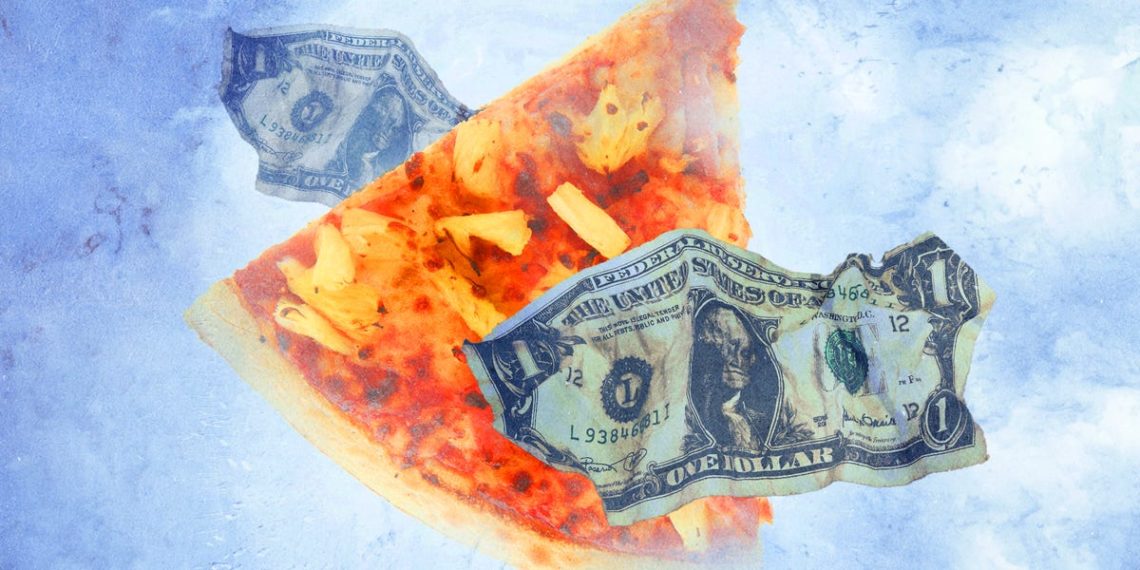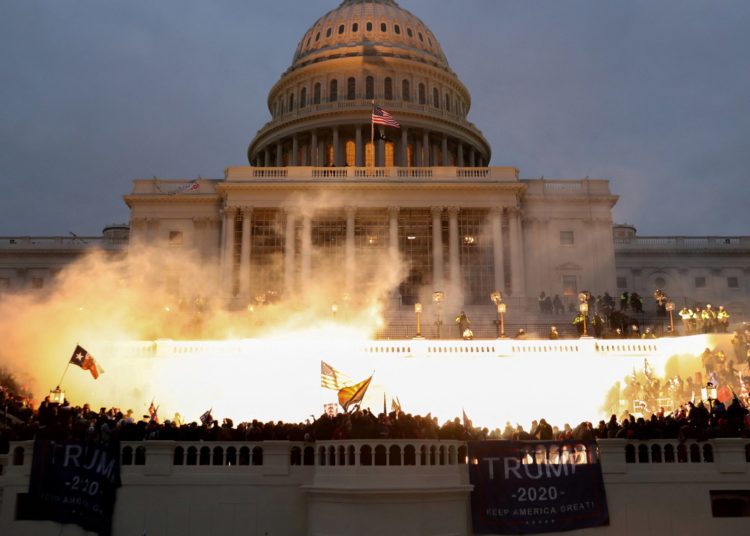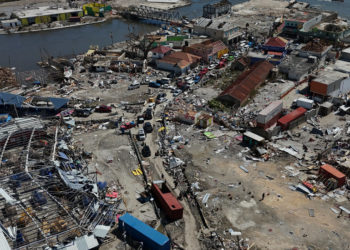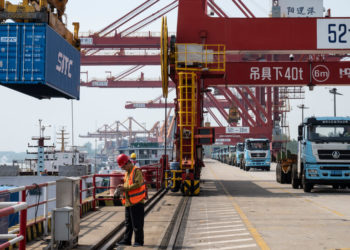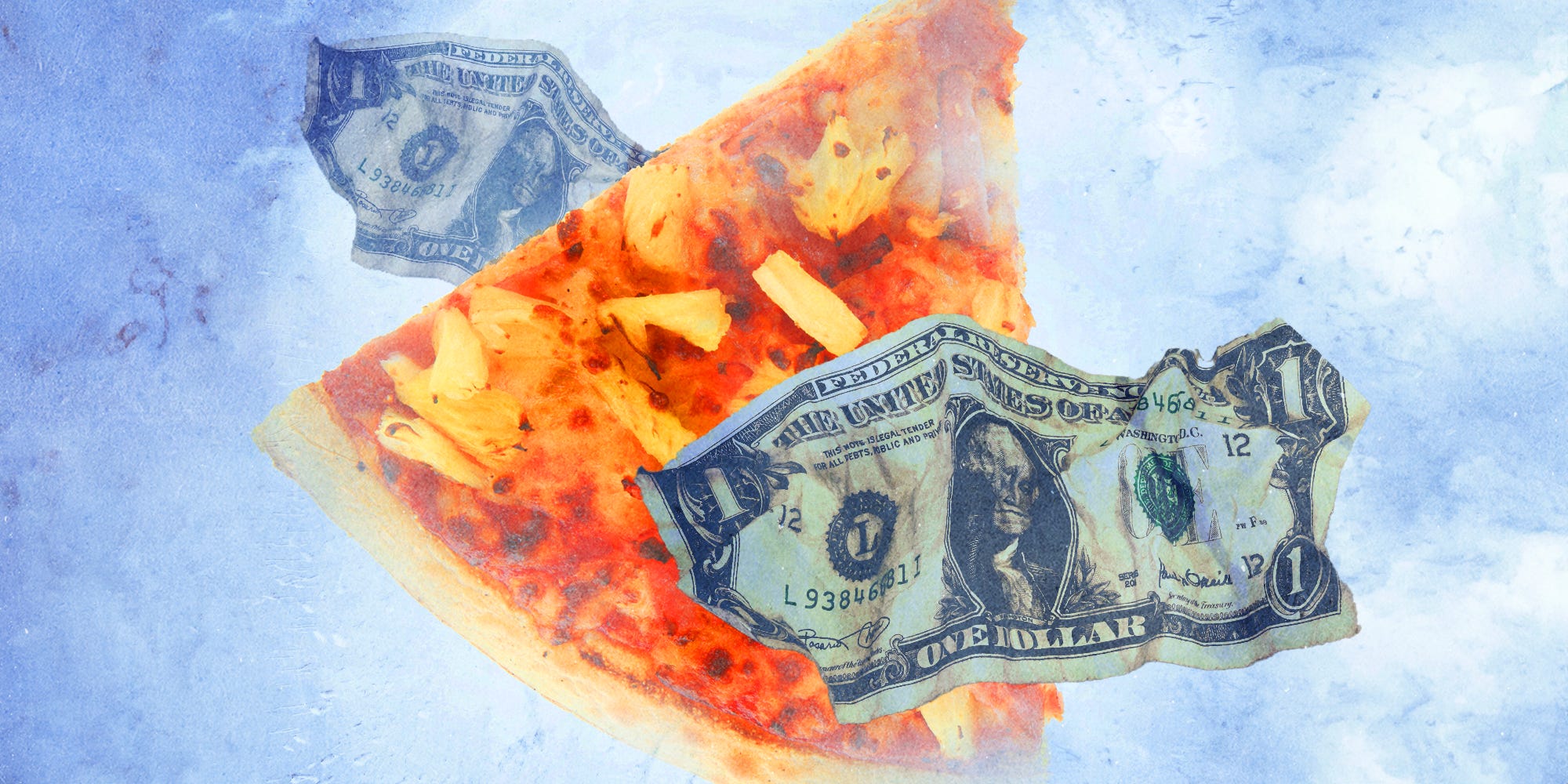
Getty Images; Chelsea Jia Feng/BI
Are you craving a frozen pizza lately? You’re not alone. Maybe it’s because the weather’s warmer, maybe you’re jonesing for a lazy-day treat, or maybe it’s because the stock market’s down and tariffs are throwing everything into chaos.
The uncertainty in the economy has people on the hunt for recession indicators — not just potential labor market weakness or spending pullbacks, but also more specific signals that suggest dark times are nigh. Consumers on edge, for example, buy more lipstick as a still-affordable luxury, or they start to scoop up smaller bottles of liquor. Another peculiar sign they’re feeling pinched by the economy: They buy more frozen pizza, specifically, the fancy kind.
“This happens every sort of downturn in the economy — there’s increased demand for premium frozen pizzas, high-priced frozen pizzas,” said Craig Zawada, the chief visionary officer at Pros Holdings, a price optimization company. It’s a bit counterintuitive, he added, since you’d think consumers are more cost-conscious, but it’s actually a trade that makes sense because “they’re replacing eating out to having a good frozen pizza at home.”
So next time you find yourself lingering in the frozen section, know that your hankering for DiGiorno might be due to a case of economic anxiety.
When people are feeling pinched — economically, existentially — they turn to the grocery store frozen section. In 2009, in the midst of the Great Recession, frozen food sales grew by 3.1%. When the pandemic hit, frozen pizza sales spiked by nearly $1 billion from the year before, from $5.8 billion in revenue in 2019 to $6.6 billion in revenue in 2020, per the market research firm IBISWorld.
“Frozen pizza has always been a good category,” Alexander Chafetz, an investment banker who does dealmaking in the consumer space, said. “But it came into focus, I would say, during the pandemic, when people weren’t working, money was tight, and you had to feed a family at night. Frozen pizza is a very economical way to feed your family.”
Michael Ryan, the owner of Tree Tavern Pizza, a frozen pizza company that operates out of New Jersey, told me that during the pandemic, his sales “went through the roof.” He said that pizza as a category does well during downturns, but frozen has the extra “convenience” factor. “It is in the freezer, ready to heat. No tipping the delivery person or cold, soggy pizza,” he said.
Right now, with everything that’s going on in the country and in the world, people are very nervous, so we’re going to gravitate toward more comfort foods.
Although growth has since slowed from the breakneck COVID-driven pace, people are still buying up more frozen pizzas, thanks in large part to inflation. The US frozen pizza industry generated $6.5 billion in annual revenue in 2024, per IBISWorld, and remains well above its pre-pandemic level. Tighter budgets still make that $10 frozen pie seem pretty appealing.
While there’s a growing amount of competition in the frozen food aisle at the grocery store, frozen pizza is still a star player, said Phil Lempert, a food industry analyst and the editor of supermarketguru.com. The boxes take up a lot of space, and they’re relatively attractive to display. They’re also convenient for stores to offer promotions and discounts on “because of the amount of different pizza brands that are out there, I would say that every week when I look at store circulars, there’s at least one pizza on sale,” Lempert said. “These companies are always vying to give promotions to the retailer.”
Pizza is a comfort food that people tend to crave in trying times such as these. “Right now, with everything that’s going on in the country and in the world, people are very nervous, so we’re going to gravitate toward more comfort foods, whether it’s mac and cheese, whether it’s hot dogs, whether it’s pizza,” Lempert said.
Mid-conversation, I realized I might be doing some accidental coping via comfort food lately, as I’ve made pizza (homemade, which was terrible) and mac and cheese (luckily, from the box) in the past few weeks, neither of which are in my normal rotation.
It also probably helps frozen pizza’s case that the quality has improved dramatically in recent years, and there are a lot more varieties on offer. You’ve got healthier options, with cauliflower crusts, for example, or you can indulge (slightly) with premium ingredients like hot honey, prosciutto, or basil. Restaurant brands have launched their own frozen offerings so people can get something that tastes like the out-to-eat experience at home. Ryan pointed out that home freezers have also gotten bigger, which makes it easier to stock up.
Now, as that good old economic anxiety is stirring up once again, people are leaning toward eating at home and stocking up from the grocery store frozen aisle.
David Portalatin, a senior vice president and food industry advisor at Circana, a market research firm, said that over the past year or so, consumers have been opting to buy a greater share of their meals at retail establishments — meaning grocery stores, clubs, online — than from food-service operations, such as restaurants.
“That’s just a reflection of several things,” he said. “One is a little bit of response to inflation and the fact that food inflation away from home is still accelerating faster than at home. But it’s also this sort of longer-term trend of a more home-centric consumer.”
When the pandemic took hold, many people had to stay home. Once the pandemic subsided, they were excited to get back out there and go to the restaurants they had eschewed for months. But that stay-at-home muscle is still stronger than it was pre-pandemic. More people are working from home, where it’s easy to whip something up in their own kitchens — Ryan said that while it may seem silly, “the fact that many folks never got out of their pajamas helped spur sales.” Consumers have also grown more accustomed to having fun nights in — turns out all that practice in 2020 means they’ve gotten better at at-home entertainment.
Consumers become more price sensitive as they opt for cheaper, family-size offerings, like pizza.
“People seem to be more comfortable at home. They want to do their own drinking at home,” Chafetz said. “People are happy being at home, nesting. I think people nest when they’re nervous, and so I think there’s a lot of that going on also.”
“Empirical evidence suggests consumers often ‘trade down’ to frozen or delivered pizza during recessions. Consumers become more price sensitive as they opt for cheaper, family-size offerings, like pizza,” Alex Fasciano, an analyst at CFRA Research, said in an email. He noted that pizza restaurants’ marketing is anchored around value, too, such as Domino’s recently launched appeal to more budget-conscious consumers: the “Emergency Pizza” promotion (a free pizza) and “Best Deal Ever” promotion (a $9.99 deal).
But again, it’s not necessarily just any old traded-down item people are buying as they start to worry about where the economy is headed, frozen pizza or otherwise; it’s the nicer stuff. It’s reflective of this overarching attitude among American consumers that we still want to treat ourselves, even as we cut back in other areas. Many people buckle down on their budgets somewhat, but they also spring for treats, whether it be a fancy latte, a weekend getaway, or a frozen pizza they tell themselves is healthy, which, maybe, don’t look too too hard at the ingredients.
“In general, over the last year, we’ve seen the headwind at restaurants and the tailwind at making meals at home because they’re more affordable. Yet there are all kinds of examples where we will choose the more premium offerings,” Portalatin said. “When we go to retail, we may not be choosing the lowest price point offering, recognizing that we’re already saving money by cooking at home.”
Consumers have been battening down the hatches for a while now. Heightened concerns around tariffs have led to an acute sense of dread among many Americans about prices, economic stability, and even the safety of their own jobs. It’s the type of mix that might make that stay-at-home Red Baron extra enticing.
William Curtis, a senior research analyst at IBISWorld, said they’re not forecasting an economic-freak-out-induced spike in frozen pizza sales like the ones in 2009 or 2020, in part because it’s not clear what will happen in the overall economy. But in the event that things really start to go south, “the logic of buying the frozen pizza when you have less money would still hold,” he said.
Curtis added that frozen pizza is facing more competition for consumer dollars than it did 15 years ago, with more frozen options available, not to mention the proliferation of delivery services that make it possible to get all kinds of foods dropped off right to your door. Obviously, cooking at home is still cheaper, especially when you account for all the fees and the tip, but many consumers are still doing some slight splurging. “There are a lot of consumers that are willing to pay these fees just for the convenience of delivery,” he said.
Ryan, from Tree Tavern, said he’s not really concerned about competition from delivery or restaurants, because he sees frozen as its own thing. His customers are loyal, and he’s focused on quality and authenticity that he hopes will appeal to people in good times and bad. He only sells plain cheese pizza, which helps keep the price stable and gives customers the opportunity to dress the pizza up however they like. “I kid with people who ask me why I don’t offer more toppings,” he said. “I jokingly say, ‘Buy your own damn pepperoni!'”
If the economy takes a turn for the worse, customers may stick with just the cheese.
Emily Stewart is a senior correspondent at Business Insider, writing about business and the economy.
The post The sure sign we’re about to enter a recession: frozen pizzas appeared first on Business Insider.
